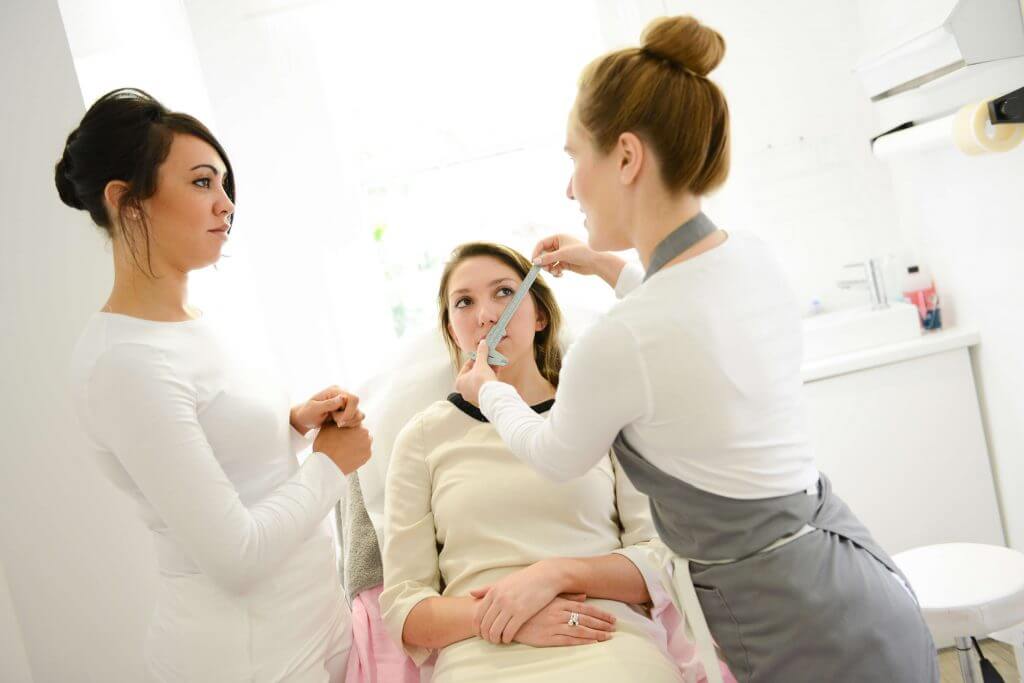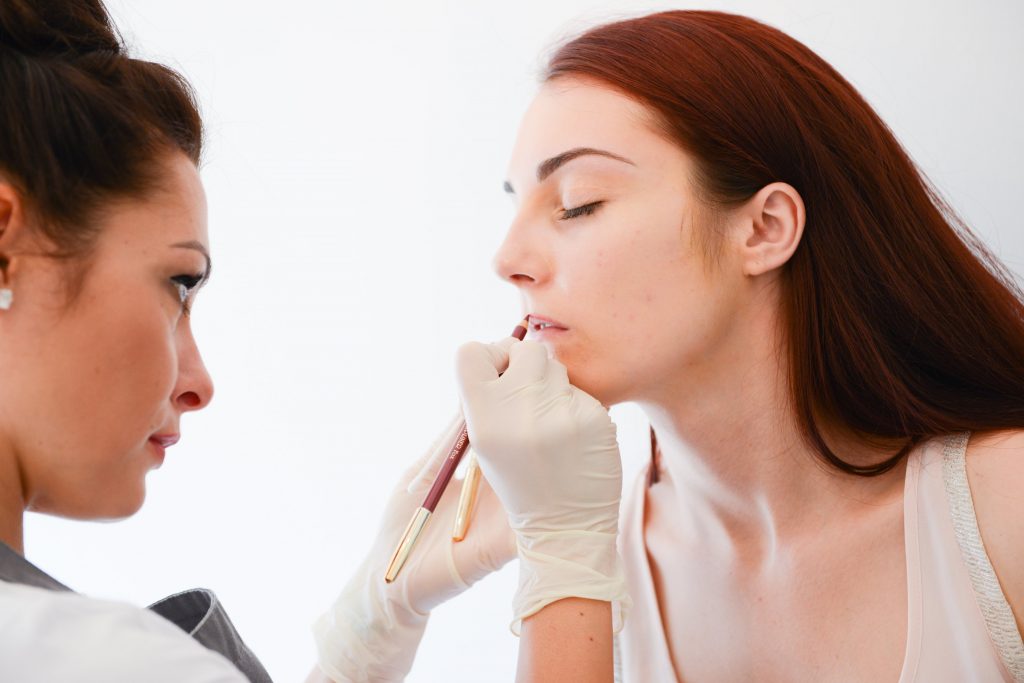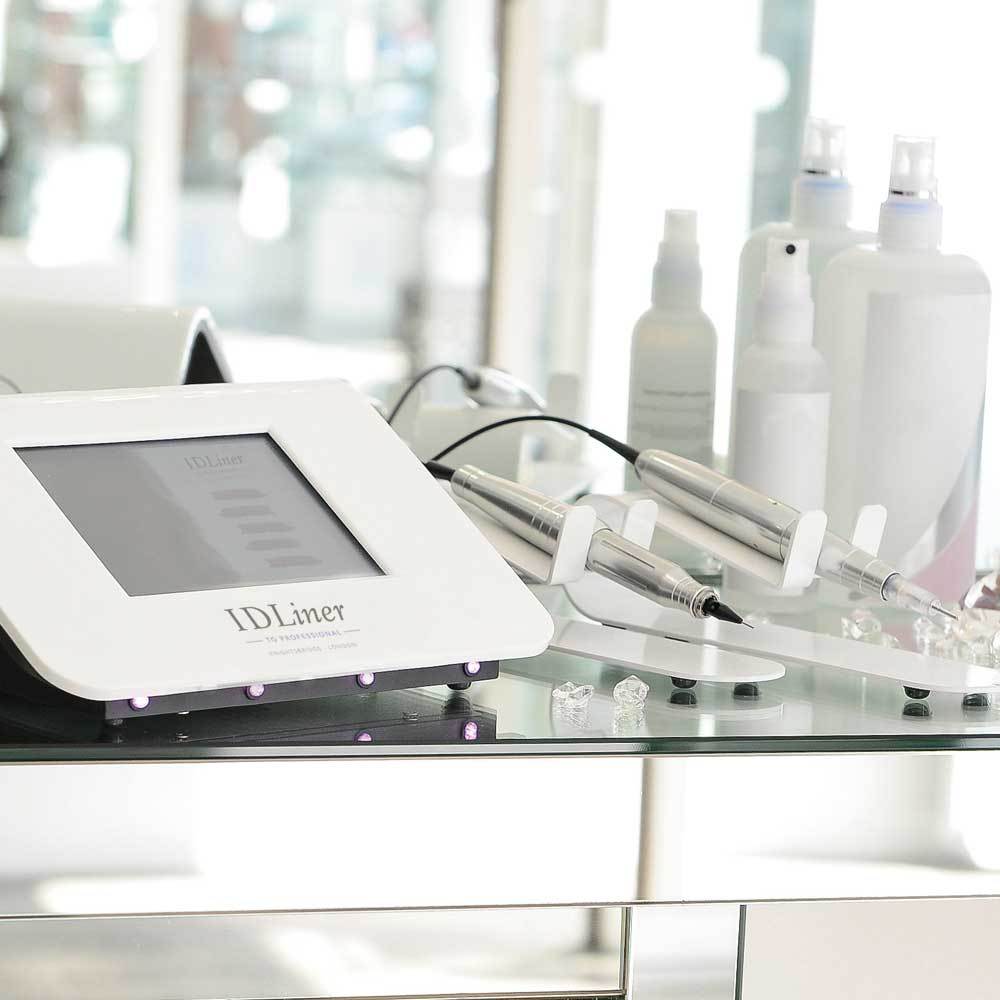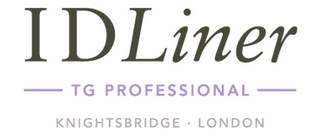How to become a Permanent Makeup Artist

The UK Brow market alone is worth a staggering £20 million according to NPD market research(1) and Permanent Make Up, or cosmetic tattooing, is one of the fastest growing and most lucrative sectors of the beauty industry. There has never been a better time to launch a career as a Permanent Make Up Artist.
As the market grows so do the opportunities for career progression, whether it’s working for yourself as a permanent makeup artists or seeking employment with a clinic or salon offering permanent makeup. It is a profession appealing to many for its pioneering techniques and growing number of treatments that rival traditional makeup. It is also a great industry for flexible working, and offers the opportunity to travel abroad with your skills.
The rise in celebrity permanent makeup fans has undoubtedly propelled this dramatic surge in popularity – with Katie Price, Andrea McClean, Charlotte Crosby and Binky Felstead joining the huge list of celebrities sporting stunning Tracie Giles London Brows, Eyeliners or Gloss & Go™ lips.
“I will never forget the mixture of nerves, excitement and empowerment I felt on that first morning.”
However, establishing a career as a permanent makeup artist and knowing where to start can be daunting. I myself experienced this many years ago when I embarked on my brand new career. With a small suitcase containing my device and pigments, several weeks of hands-on training in the UK and America and a hefty £10,000 debt on my credit card, I will never forget the mixture of nerves, excitement and empowerment I felt on that first morning when I arrived at the local salon that had kindly (and somewhat bravely) agreed to rent a room to me. At this point, Permanent Make Up was still a relatively unknown treatment in the UK despite being massively popular in Eastern Europe and the States, and it was a much harder sell than it is today. I could never at that point have envisaged what I would achieve in this fantastic industry and what a blessing that risky decision to quit my job and invest in Permanent Make Up training would be.
“Fast forward to 2017 and I am the proud owner of the UK’s first ever 3-storey clinic dedicated to the art of Permanent Make Up based in the heart of London’s exclusive Knightsbridge.”
Fast forward to 2017 and I am the proud owner of the UK’s first ever 3-storey clinic dedicated to the art of Permanent Make Up based in the heart of London’s exclusive Knightsbridge. I head up a team of the world’s very best technicians and we have six rooms fully booked six days a week with clients in pursuit of the beautiful eyebrows, eyeliners and lip treatments that we have become globally renowned for. We are frequently featured in the press and media, and proudly count numerous celebrities, politicians and even royalty as our clients. I have been featured on ITN news discussing the ethics of SPMU, Channel 4’s Embarrassing Bodies performing an areola reconstruction and I was awarded Industry Professional of the Year 2016. Finding flaws in many of the professional products available on the market, I developed my dream range of PMU equipment and training alongside my daughter Charlotte who joined the company in 2013 after graduating from Exeter University, and we now sell the ID Liner pigments, devices, cleansers, brow measures, pencils & more to technicians in countries all over the world. This industry has changed my life, and I have produced this guide to help anyone thinking about starting a career as a Permanent Make Up technician.
What is Permanent Makeup?
Permanent makeup is a form of cosmetic tattooing where tiny amounts of mineral pigment are inserted into the skin at high-speed using a needle. Trusted source WebMD describes the process as: “Using a needle to place pigmented granules beneath the upper layers of the skin.”(2)
Microblading is another form of Permanent Make Up, but instead of using a needle, a blade is used to gently cut the skin before implanting the pigment. The effects of both are long-lasting but vary from person to person depending on skin characteristics, pigment choice, practitioner technique, sun exposure, skin type, medication and more. The pigment will fade over time, as it is not inserted as deeply into the skin as a conventional tattoo, but because we cannot name a date or time that the colour will leave the skin treatment should be referred to as Permanent Make Up rather than Semi-Permanent Make Up (although many practitioners use both terms interchangeably to market their services). If carried out by a good and reputable technician, its benefits are well documented, notably providing smudge-free makeup that always looks flawless.
Permanent makeup can also be described as ‘cosmetic makeup’, ‘dermapigmentation’, ‘micropigmentation’ and ‘cosmetic tattooing’.
One of the great benefits of permanent makeup is that it can be used for aesthetic purposes – such as wanting to give the impression of fuller lips, or for medical reasons – such as creating an areola following breast surgery or to camouflage scars.
Helping others improve confidence levels and overall wellbeing makes this a very rewarding career.
How Much can a Permanent Makeup Artist Earn?
The cosmetic makeup industry is a lucrative, growing market. Since many technicians are sole traders, this allows for flexible working and therefore incomes can vary greatly.
A successful technician can earn tens, if not hundreds of thousands of pounds depending on their marketability, client base, reputation, qualifications and experience, and whether they work independently or for a business. The cost of services can range from £75 (beauty spots for example) to £800, with some elite consultants even charging as much as £1,000 for work, which gives an indication of how profitable the market can be.
While a successful technician could earn in excess of £100,000 a year, the average salary is estimated to range between £30,000 and £50,000 per year. This is significantly higher than a traditional makeup artist earning £20,158 annually in the UK (3). This reflects the view that cosmetic tattooing is a highly specialised profession.
Training Courses

In the UK there are a number of accredited and respected permanent makeup courses providing specialist training for makeup artists.
These can vary in structure and any reputable course would generally require individuals to be 18 years or over.
There are some useful industry bodies to consult, including The British Association of Beauty Therapy and Cosmetology (BABTAC) and the Vocational Training Charitable Trust (VTCT).
Before embarking on training, it is advisable to ensure your training provider has all the necessary qualifications and accreditations required. You should also check with your local council what qualifications are necessary for you to have to perform permanent makeup in your area.
Maintaining high standards through training is important in the industry, especially when rogue artists can give the profession a bad reputation.
The popularity of treatments such as permanent eyeliner and fuller lips have given rise to some unqualified work taking place. Worryingly, ‘how to tattoo eyeliner’ is still one of the most popular searched terms on search engines in relation to permanent makeup.
ID Liner® training courses take place in our training studio in the Tracie Giles Knightsbridge clinic and are accredited by VTCT, one of the leading government-approved examining boards in the beauty industry. Our training courses are free with the purchase of one of our starter kit bundles, a decision we took to prevent people choosing a quick-fix course and buying poor quality products, just to get a certificate to work. We offer courses for everyone, from total beginners to advanced technicians and we offer a VTCT Level 4 qualification which is becoming increasingly required by many councils across the UK.
Many courses including our own have finance options and whilst they can appear to be expensive, an investment into a decent training course and products will generally be made back pretty quickly.
We have had students of all different ages training with us from so many different backgrounds. Some of our students are salon owners or beauty therapists whilst others have been city traders or financial directors looking for a complete career change. The freedom and flexibility of a career in Permanent Make Up is very attractive and whilst a beauty background may help in some ways, it absolutely is not essential.
Getting Insurance
As with all freelance beauty work, it is of paramount importance to get the right insurance. This is especially important if you are working for yourself – whether you have a fixed treatment room, work as a mobile agent or in any other environment.
A number of well recognised insurance companies will provide a personalised quote for you. BABTAC can provide some really useful guidance on this.
Having a robust insurance policy will take away unnecessary stress and worry. A good policy should cover all key areas, including; liability cover, contents cover and legal expenses, among other points.
Some insurance providers will also extend the policy to nail or hair treatments, which may be useful if you decide to expand your business.
Getting a Licence
Once you’ve completed your training and got insurance, your next step is to get a licence to work. You are only allowed to trade if you are working safely and compliantly, and your local council will require certain documents from you to ensure that you are. In many instances they will also want to come and see the premises that you are working from to see that all of their criteria are met (for example, you will need to a basin in the room that you are working from). They will typically need you to provide a copy of your clinical waste contract (a contract you should set up ensuring the professional collection of the contents of your clinical waste bin and sharps bins), a detailed description of the items you are using and their compliance with UK regulation. They may also ask to see your insurance policy, your training certificates, a PAT test certificate for your electrical equipment and a fire safety certificate. Requirements vary between boroughs and it is worth noting that some councils in the UK will only provide licences to those with a government approved qualification, such as a VTCT Level 4.
The VTCT Level 4 Certification in Micropigmentation (QCF) is an advanced qualification created with beauty therapists in mind. One of the most valuable skills artists will acquire is the opportunity to gain experience in a realistic working environment, as well as the education and background required to set up as a confident consultant.
Completing Model Treatments

A key part of your permanent makeup artist training will be completing model treatments. The best training is first hand experience and this is where all your practice becomes a reality.
“The first time you work on a model alone and out of a controlled training environment can be daunting…I often liken it to the first time you drive alone after passing your driving test.”
As part of your training you should have experience working on models alongside your trainer. However, the first time you work on a model alone and out of a controlled training environment can be daunting…I often liken it to the first time you drive alone after passing your driving test. This however is the time when you really will learn the most, putting everything you have learnt during your training course to practice.
Before you start working on models (friends and family will usually be your first models) make sure you are completely comfortable with your device and handpiece/microblade. The best way to get used to this is to spend many hours practising on training mats. Whether you are a beginner or an advanced technician there is always so much to be gained from mat practise. Your technique can always be improved and there are always new trends and skills to be learnt, whatever level you are.
If you do not have any practise skin, there are other materials that cosmetic tattooists practise on, such as floor lino and banana skins. Due to its similarity to human skin, pig skin is championed by the worlds top tattooists as a realistic practise material to perfect technique. However, this isn’t for everyone and rubber mats can be just as useful.
Once you feel ready to work on models, you can advertise your services locally or via social media, or alternatively to friends and family. The more models that you can work on the better. Take your time, work within your own capabilities and only accept work that you feel confident and comfortable with.
I would avoid taking on any retouch work from another technician initially until you are very confident on your colour theory and in going over somebody else’s work. Don’t forget, whether the client is a model or a full paying client, once you touch somebody else’s work (whether good or bad), it becomes your work and therefore potentially your problem if it was previously sub-standard.
“Regardless of who you are working with, they have entrusted you with their face and their safety and meeting the desired outcome of the treatment are paramount.”
A good training provider should always be there to support you during this stage, so if you have any questions or concerns don’t hesitate to contact them, rather than taking a risk. Regardless of who you are working with, they have entrusted you with their face and their safety and meeting the desired outcome of the treatment are paramount.
It’s common to be nervous when you first start working on models, so here are some other top tips:
- Arrive in good time to set up. Organisation is key!
- Read through your manual and notes that you made during your training before you begin
- Take photos of every stage of the treatment. You will need these for insurance purposes, as well as confirmation as to what has been agreed by your client
- Ensure that a full consultation is given to your client before you start and that all consent forms and medical history forms have been discussed, filled out and signed
- Your client should have done a patch test before they come for their treatment. Your training provider will explain how this should be carried out
- Keep calm, dress appropriately for a clinical environment and remain professional at all times
- Is there an opportunity here also to ‘upsell’, by telling them about other products and services you offer?
During treatments carried out in a training environment, you are usually observed to ensure that you are working safely. While this can be an anxious time, remember that feedback is purely to help improve your skills.
Marketing Your Services
Two of the most important factors in beauty consulting are finding clients and keeping clients. Word-of-mouth is extremely important in this industry and creating a solid reputation is key.
First of all, set up a website. It’s often easier to use your name as your brand (e.g. joebloggs.com) unless you are setting up a business. Before you embark on this, it’s worth checking that you can ‘own’ these handles on social media and that the web domain exists (check with GoDaddy.com). It’s good to be consistent to build a strong identity, such as @joebloggs. Keep it snappy and memorable!
Unless you’re a whizz at WordPress and technically minded, it’s worth paying for someone to set your website up. Just provide them with all the relevant information about yourself and your business, including your qualifications, your background, your price list, locations covered, your contact details and your social media handles. With your client’s permission, also include portfolio images, these are extremely important in selling your work.
Your website just needs to cover the basics and show that you have an online presence. Get some business cards printed as well featuring your website and social media details. Likewise, flyers of your work with promotional offers could be circulated at salons where you work.
“Social media is hugely important and shouldn’t be underestimated in growing your reputation and the excitement around your brand.”
Social media is hugely important and shouldn’t be underestimated in growing your reputation and the excitement around your brand. Use your twitter and facebook accounts to share approved client photos and industry news and trends.
Instagram and Pinterest are great for growing followers with an interest in beauty, and of course YouTube is the mecca for showcasing your talent via tutorials. If you can, share pictures of before and after photos using permanent makeup.
Find your niche and follow celebrities and influencers in it. For example, Lou Teasdale (@Louteasdale), Anastasia Beverly Hills (@anastasiabeverlyhills) and Charlotte Tilbury (@CTilburyMakeup), as well as tattooist Bang Bang on Instagram (@bangbangnyc).
Buying Reputable and Trustworthy Products

You’re only as good as the tools you use, so it’s worth investing in high-quality products that adhere to the highest safety standards.
During your training as a permanent makeup artist, you will generally be taught how to use certain products from a specific brand and your trainer may be able to offer advice and insight. It’s also worth asking friends in the industry on their preferences.
Again, refer back to the BABTAC for guidance on where to buy trade products.
Make sure items purchased meet UK and EU requirements regarding product testing, so that they meet all health and safety requirements.
Working for Yourself vs Working for a Business
It’s the age-old question in the beauty industry – to work for yourself or for others? Both have benefits and drawbacks, the only decision that’s right is the one that works best for you.
Working in a salon or rented space is extremely conducive to building relationships and long-term clients. It can also be suitable for those that prefer the regularity of routine and having an ‘office environment’ or to socialise with others at work. It can offer a regular income, as work tends to be more consistent, and it may mean that some of your insurance costs are covered, but that shouldn’t always be assumed. One of the downsides to this is not having the flexibility to work on ad-hoc projects or expand your client base.
Most beauticians are self-employed. It can be extremely rewarding to be your own boss and have the flexibility to work the hours you want, where you want. However, being mobile comes at a cost, and requires you to have products and equipment that are always ‘on the go’ with you. Think about how you will get around (most likely you will need a car) and how many clients you will be able to service in a day. As you have less overheads, the pay tends to be better.
Of course, don’t forget that if you are self-employed you will also need to find work. Whether that’s taking out adverts or relying on word-of-mouth. You will also have to do your own accounts, or employ an accountant to help you.
Opportunities Once you are Qualified
Once qualified, opportunities in the industry are endless. It all depends on how much you want to work, and what path you’d like to take.
Once you’ve made the decision to work freelance or for a business, you can move forward. Think about what specialisms interest you, or if you’d rather be a generalist. There are of course opportunities as you progress to learn advanced medical tattooing techniques as well as more complex PMU techniques such as scalp tattooing and whipshading.
Do you want to work from many salons, or in one place? If travel is your thing, there are numerous conferences and masterclasses taking place all over the world every month. These are great opportunities for networking and opening doors for international opportunities. Your main goal further down the line may be to become a trainer or a distributor. The world of Semi-Permanent Makeup really is your oyster.
If you decide to work for a salon, create a CV or drop off your business card/flyer with local salons in your area, or desired area of working. You can also check adverts on noticeboards and websites such as Indeed and Gumtree, as well as through your contacts.
The decision to go freelance is an exciting one, but be prepared that it takes time to build a portfolio and client base. Word-of-mouth and reputation are important to build, and you may decide to launch in to the industry by offering promotional or discounted rates to get clients on board.
Use your website and social media to build up your presence, speak to friends and contacts and connect with people on Linkedin.
“Working in the beauty industry can be hard work, but it’s rewarding and business is booming – I love my job and I am so grateful every day for this fabulous and fulfilling industry.”
